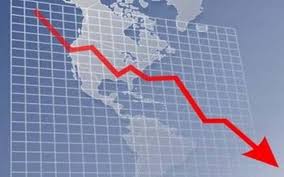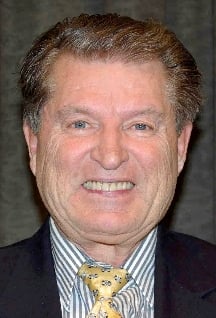Global Financial Turmoil: A Severe Worldwide Economic Recession

This timely analysis was first published by Global Research on January 22, 2016, a year prior to the inauguration of the Trump presidency.
This incisive article analyses the impending 2016-2017 economic crisis as well as the evolving chaos in global financial markets.
Professor Tremblay views “the current unfolding crisis as essentially a continuation of the 2007-08 financial crisis which has been temporarily suspended and pushed into the future by the U.S. Federal Reserve.”
And it would appear that this temporary suspension which in 2016 “was pushed into the future” (aka 2018-2019) has come come to fruition with the dramatic February 2018 Worldwide collapse of stock markets.
Michel Chossudovsky, February 11, 2018
***
“May you live in interesting times.” Popular curse, purported to be a translation of a traditional Chinese curse
“The sources of deflation are not a mystery. Deflation is in almost all cases a side effect of a collapse of aggregate demand —a drop in spending so severe that producers must cut prices on an ongoing basis in order to find buyers. Likewise, the economic effects of a deflationary episode, for the most part, are similar to those of any other sharp decline in aggregate spending—namely, recession, rising unemployment, and financial stress.” Ben S. Bernanke (1953- ), on November 21, 2002
“I’m about to repeat what I said at this time last year and the year before…Sooner or later a crash is coming and it may be terrific. The vicious circle will get in full swing and the result will be a serious business depression. There may be a stampede for selling which will exceed anything that the Stock Exchange has ever witnessed. Wise are those investors who now get out of debt.” Roger Babson (1875-1967), on September 5, 1929
Image: Author Prof. Rodrigue Tremblay
The onset of 2016 has been most chaotic for global financial markets with, so far, a severe stock market correction. As a matter of fact, the first month of 2016 has witnessed the most severe drop in financial stocks ever, with the MSCI All-Country World Stock Index, which measures major developed and emerging stock markets, dropping more than 20 percent, as compare to early 2015. For sure, there will be oversold rallies in the coming weeks and months, but one can expect more trouble ahead.
Many commentators are saying that the epicentre of this unfolding financial and economic crisis is in China, with the Shanghai Composite Index beginning to plummet at the beginning of the year. In my view, reality is more complex and even though China’s financial and economic problems are contributing to the collapse in commodity prices, the epicenter of the crisis is still in Washington D.C.
That is because the current unfolding crisis is essentially a continuation of the 2007-08 financial crisis which has been temporarily suspended and pushed into the future by the U.S. central bank, the Fed, with its aggressive and unorthodox monetary policy of multiple rounds of quantitative easing (QE), i.e. buying huge quantities of financial assets from commercial mega-banks and other institutions, including mortgage-backed securities, with newly created money. As a consequence, the Fed’s balance sheet went from a little more than one trillion dollars in 2008 to some four and a half trillion dollars when the quantity easing program was ended in October 2014. Other central banks have followed the Fed example, especially the central bank of Japan and the European central bank, which also adopted quantity easing policies in monetizing large amounts of financial assets.
Why did the Bernanke Fed adopt such an aggressive monetary policy in 2008? Essentially for three reasons: First, the lame-duck Bush administration in 2008 was clueless about what to do with the financial crisis that had started with the de facto failure of Bear Stearns in the spring of 2008 and of Merrill Lynch in early September 2008, culminating on September 15, 2008, with the failure of the large global investment bank of Lehman Brothers. So the U.S. central bank felt that it had to step in. In fact, it financed the merger of the two first failed mega-banks with the JPMorgan Chase bank and the Bank of America respectively. (For different reasons, it did not intervene in the same way when the Lehman Brothers bank failed.)
Secondly, bankers who have a huge influence in the way the Fed is managed did not want the U.S. government to nationalize the American mega-banks in financial difficulties, as it had been done in the 1989 when the George H. Bush administration established the government-owned Resolution Trust Corporation (RTC) to take over some 747 insolvent savings and loans thrift banks.
Thirdly, the Bernanke Fed was very worried that the 2007-08 banking crisis would lead to a Japanese-style deflation that would wreak havoc with an overleveraged economy. The hope was to avoid a devastating debt-deflation economic depressionlike the one suffered in the 1930s.
By injecting so much liquidity in the system, the Bernanke Fed created a gigantic financial bubble in stocks and bonds, even though the real economy has grown at a somewhat languishing 2 percent growth rate. Stock prices went into the stratosphere while interest rates fell as bond prices rose. Last December 16, the Fed announced officially that it will no longer blow into the financial balloons and that it was raising short-term interest rates for the first time since the financial crisis, setting the target range for the federal funds rate to between 1/4 to 1/2 percent. This was a signal that the financial party was over. And what’s more, this means that the stock market and the bond market will once again go in different directions, as a reflection of the state of the real economy, no matter what the Fed does.
Since 2008, the U.S. Fed has painted itself into a financial corner from which I personally felt it would be difficult to extricate itself. Indeed, it would be extremely difficult to correct the financial bubbles it has created —as an unintended consequence of salvaging the mega-banks in creating trillions of free money —without damaging the real economy of production and employment. If global stock markets collapse and if price deflation accelerates, making it more difficult to service the debt of consumers, corporations, and government alike, a repeat on a larger scale of what has happened in Japan over the last twenty-five years can be feared. This, at the very least, could lead to a global economic recession in 2016-17. If we go back in history, it could also be a repeat of the 1937-38 crash and recession, eight years after the crash and financial crisis of 1929-32.
One thing can be made clear: The creation of the Fed in 1913, as a semi-public American central bank, has not prevented the occurrence of financial crises. It has, however, been a boon to large banks because it has served as an instrument to socialize their losses.
Stay tuned.
Dr. Rodrigue Tremblay, an economist, is the author of the book “The Code for Global Ethics, Ten Humanist Principles”,
Please visit the book site at:
http://www.thecodeforglobalethics.com/
and his blog at:
http://www.thenewamericanempire.com/blog.htm
Or click here.
Send contact, comments or commercial reproduction requests (in English or in French) to:
[email protected]. To write to the author:


